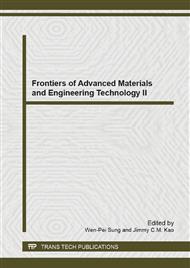p.1469
p.1473
p.1477
p.1481
p.1485
p.1489
p.1496
p.1500
p.1505
Two Methods to Test Transducer Array Directivity
Abstract:
An array which possess more array element number and whose frequency of the drive signal can be as large as possible in a range, directivity will be more preferable. On the other hand, when the structure of the sound radiating surface of the transducer or array layout is symmetrical, the corresponding directivity pattern will be symmetrical. In order to test transducer directivity, two methods are designed. The one is to measure the ultrasonic sound pressure level by instruments. The sound pressure level is measured at multiple points to deduce the directivity angle of the acoustic transducer array. The beam width of the 3×3 array is about at 23kHz, and the directivity acute angle is about 10°; higher frequencies will lead to the side lobes, but it can be negligible when compared to the main lobe. The other method is using the frequency analyzer to test transducer directivity in a silencer chamber. The sound pressure level can be read out from frequency response diagrams. The angle between the sound pressure value that decreasing 3db from the max value 111.7db and the max value is about 11°. So the directivity acute angle is about 11°. It should be noticed that, as the directivity diagram can not be directly attributed, there is some deviation in the conclusion.
Info:
Periodical:
Pages:
1485-1488
Citation:
Online since:
April 2014
Authors:
Price:
Сopyright:
© 2014 Trans Tech Publications Ltd. All Rights Reserved
Share:
Citation:


